Nikon D810 Review
Nikon D810 Introduction
The Nikon D810 is the replacement for the D800E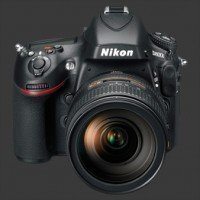
Nikon D800E and D800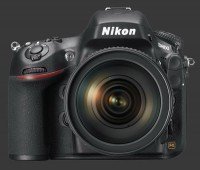
Nikon D800 twins. It features a new 36 megapixels full-frame CMOS sensor without anti-alias filter to deliver maximum sharpness. This sensor has a low base sensitivity to deliver ultra-clean images at such high resolution.
There is a powerful EXPEED 4 processor in the D810. It offers more flexible image-parameters than any digital camera, allowing to fine-tune the output to a new level of accuracy. Nikon also added a 5th type of metering which is designed to preserve details in highlights.
The Nikon D810 is undoubtedly a professional digital camera. Its sensor can shoot continuously at 5 FPS and capture 1080p HD video. The durable body of this DSLR features an extra large 100% coverage viewfinder and weather-seals against dust and moisture.
This high-end digital camera is designed for efficiency with dual control-dials and over twenty direct controls. It also emphasizes video with a sophisticated full-time autofocus system, external stereo sound input and video manual-controls.
The Nikon D810 offers an extremely capable alternative to medium-format cameras at a fraction of the price and will all the flexibility of the Nikon F-mount which boasts one of the two largest lens lineups of the industry.
Nikon D810 Features
Sensor
- 36 Megapixels CMOS sensor
- Full-Fame Nikon FX format
- No Anti-Alias filter
- Standard ISO 64 - 12800 range
- Expanded ISO 32 - 51200 range
- Highly customizable Auto ISO
- Built-in Dust-Reduction
- JPEG, TIFF, RAW or JPEG+RAW Output
Exposure
- PASM exposure modes
- 1/8000s - 30s Shutter-speed, plus Bulb
- EC, ±5 EV, 1, 1/2 or 1/3 EV steps
- FC, -3...+1, 1, 1/2 or 1/3 EV steps
- Matrix (Multi-Segment), Highlight Weighed, Center-Weighed, Average & Spot metering
- AEB or Flash Bracketing, 2 to 9 Frames, ±1 EV
- Exposure Fine-Tuning, ±1 EV, 1/6 EV steps
- 1, ½ or 1/3 EV Exposure & ISO steps
- Built-In HDR, 2 shots, 1-3 EV steps, 3 blending levels, single image or series
- 1/250s Flash-Sync speed
- Optional Electronic Front-Curtain Shutter
Focus & Drive
- 51-Point Phase-Detect autofocus, 15 cross-type
- Single-Point, Dynamic-Area or Auto focus-point
- Single-Shot, Continuous or Manual focus-drive
- 3D Tracking AF with OVF and Live-View
- Contrast-detect AF for Live-View and video
- Face-Detect AF in Live-View
- Optional AF-Assist lamp
- 5 FPS Drive, Max 100 JPEG, 28 RAW or 25 TIFF
- Customizable Self-Timer, 1-9 Shots, 2-20s Start Delay, ½-3s Interval
- Quiet-Shutter with delayed mirror-return
- Mirror-Up and Exposure-Delay, 1-3s
- Multiple-Exposure, 2-10 shots, optional Auto Gain
- Internal-Timer, 1-999 times, 1-9 shots, 1s-24h interval, delayed start 1m-23h59m
- Time-Lapse, 1s-10m interval, 1m-8h capture time
- Optional Autofocus Fine-Tuning
Images Parameters
- AutomaticTwo types: Normal & Preserve Warm Colors, Preset, Kelvin and Custom6 Memories WB
- White-Balance fine-tuning, 2-axis, 25-steps
- 7 Built-in Picture Styles
- Automatic or manual Sharpness, 37 steps
- Automatic or manual Clarity, 41 steps
- Automatic or manual Contrast, 25 steps
- Automatic or manual Saturation, 25 steps
- Manually adjustable Hue, 25 steps
- Manually adjustable Brightness, 13 levels
- Virtual WB Bracketing, 2-9 Frames, 3 step sizes
- Virtual ADL Bracketing, 2-5 Frame, 1 step size
- Optional High-ISO Noise Reduction, 3 levels
- Optional Long Shutter Noise Reduction
- Optional Distortion-Correction
- Optional Vignetting-Correction
- Optional Dust-Off reference photo
- Optional Active D-Lighting (ADL), 4 levels
Video
- 1920x1080 @ 60 FPS 16:9 HD Video
- 1280x720 @ 60 FPS 16:9 HD Video
- Quicktime H.264, 2 quality levels
- Simultaneous uncompressed 1080p HDMI output and compressed SDXC recording
- Built-in stereo microphone
- Auto or manual Audio-Sensitivity, 20 levels
- Wide or Vocal Frequency-Response
- Optional Wind-Filter
- Stereo sound-input mini-jack
- Stereo sound-output mini-jack
Controls
- Dual control-dials
- Optional Easy ISO or EC control
- Combined configurable AE-L/AF-L button
- Dedicated AF-On button
- Modeless exposure-mode
- Modal drive-mode dial
- Customizable Function button
- Customizable DOF-Preview button
- Customizable BKT button
- Direct Video-Record button
- Live-View trigger
- Focus-Point lock
Viewfinder & Displays
- Optical Viewfinder, 100% coverage, 0.7X magnification
- Built-in Viewfinder-Shutter
- 3.2" LCD, 1.2 Megapixels
- Illuminated top LCD status display
- Dual-Axis Digital-Level
- Optional DOF-Preview in OVF
- DOF-Preview in Live-View
- Optional DX cropping frame
- Optional composition grid
- Sound-Level monitor
Body & Construction
- Nikon F-mount
- Weather-sealed body
- Built-in pop-up flash (GN 12)
- Hot-Shoe for external lighting
- Sync-Port for external lighting
- Wired remote connector
- SDXC Memory card slot
- Compact Flash memory card slot
- Proprietary Lithium-Ion battery
- Metal tripod mount
- USB 3.0 port
Externally, the D810 is identical to the D800 & D800E. Rather than repeat the D800 review, we explain each new feature and provide a detailed analysis of image-quality and performance of the D810.
Nikon D810 Capability - What can it do?
The Nikon D810 offers a strict superset of it's predecessor's features, described in the Nikon D800 review. This is a professional DSLR with, as always, full manual-controls, custom white-balance, manual-focus, bracketing, choice of metering patterns, a hot-shoe and many more functions.
A new imaging pipeline based on an EXPEED 4 processor gives takes image-rendition to the next level. It has now 7 Picture Styles, with Flat being the new one. It applies a very linear tone-curve to capture a wide dynamic-range which results in a low contrast image which is more malleable when manipulated by imaging software. Image-parameters have been revamped and given extremely fine increments. There are 13 Brightness levels, 25 levels of Hue, Saturation, Contrast, White-Balance Fine-Tuning on each axis, 37 levels of Sharpness and a whopping 41 levels of Clarity, which is a completely new parameter.
Image-parameters do not apply to RAW capture but allow tremendous flexibility for JPEG and TIFF images. The latter is new to the D810 and stores uncompressed yet fully-rendered images. This should reduce the desire by some photographers to shoot RAW since it makes the workflow quicker and simpler. This allows a continuous capture 100 JPEG images, instead of 28 RAW files. The advantage does not apply to TIFF images which max out at 25 per burst.

Speaking of continuous shooting, the D810 squeezes out one more frame-per-second with 5 FPS at maximum resolution. In 15 megapixels DX mode though, it manages 7 FPS. This comes with a redesigned shutter and mirror mechanism which aims to reduce vibrations. Nikon took this one-step further by allowing the use of an electronic-shutter when exposure begins.
The sensor in the D810 is new. While it retains a 36 megapixels resolution, it offers an ISO 64 base sensitivity. Amazingly, they also managed to push the internal output to a maximum of ISO 12800. This lets ISO expansion provide a total ISO 32 to 51200 sensitivity range. This sensor does not feature an anti-alias filter at all. Hence, it can provide even more sharpness than the D800E.
The second change significant to both JPEG and RAW shooters is a unique Highlight Weighed metering. This option is provided in addition to Matrix, Center-Weighed, Average and Spot metering. It use the entire frame but gives more importance to highlights than Matrix metering does. The result is exposure that causes fewer blown highlights. Note that this is different than Olympus' own Highlight Spot which requires measurement of an area to determine exposure.
Highlight Weighed metering is key to producing more appealing images. Unlike ADL, it affects the whole frame and therefore may produce images which appear too dark. This images can be adjusted in software which is why the new low-noise sensor is of the D810 is important. This plays into the biggest advantage of recording high bit-depth images. The new metering pattern is restricted to Nikkor lenses of type G, E and D and may not work with third-party lenses.

There is a 51-point Phase-Detect AF system with 15 cross-type points inside the D810. It adds 5-point Group-Selection to its predecessor. The usual Automatic and Single-Point selection modes are still there. Live-View also offers Tracking and Face-Detect autofocus.
Video features have been greatly enhanced on this DSLR. It can now record full 1080p HD video at 60 FPS. It can also simultaneously output an uncompressed 1080p HDMI signal while recording a Quicktime file with H.264 codec onto a flash-memory. The stereo microphone on the D810 has an optional Wind-Filter and tonal-response restricted to voices.
Nikon D810 Performance - How well does it take pictures?
Ultimately, it is the image quality that makes a camera worth buying. For a digital SLR, image quality greatly depends on the lens used. While color, noise, contrast and exposure are properties of the camera, distortion, vignetting and chromatic aberrations are properties of the lens. Sharpness depends on the weakest link. So, the camera cannot capture more details than the lens lets through. Conversely, a lens can transmit a greater amount of details than the sensor can capture.
A high-resolution full-fame DSLR like the Nikon D810 is particularly demanding on lenses and it cannot show its highest image quality without a suitably sharp lens. Its incredible resolution resolves extremely fine details and its full-frame sensor uses the weakest outer-portions of a lens. The Nikkor AF-S 24-70mm F/2.8 IF-ED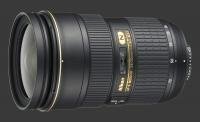
Nikkor AF-S 24-70mm F/2.8 IF-ED is sufficiently sharp. As general rule, big expensive cameras require big expensive lenses.

Image noise of the Nikon D810 is impressively low, particularly considering the 36 megapixels of resolution. It produces perfectly clean images until ISO 800 with noise barely visible at 1600. Both ISO 3200 and 6400 have noticeable noise when viewed at 100% but remain extremely usable for all but very large prints. ISO 12800 and the expanded 25600 sensitivity show even more noise. When downsizes to common print sizes, though, noise appears relatively minor. ISO 51200 is extremely noisy and not really useful.
Notice how this is exactly the same performance in terms of image-noise as the D800. However, the imaging pipeline has been nicely improved and retention of details is visibly better. This makes larger prints possible and takes better advantage of the 36 megapixels CMOS sensor in this DSLR.
The ISO 64 base sensitivity allows the Nikon D810 to achieve greater dynamic-range than previous models at this pixel-density. Both ISO 32 and 100 also offer class-leading dynamic-range, which is only possible to store using a high bit-depth format like RAW or TIFF.
Image sharpness is highly dependent on the lens which is the most likely cause of soft images on the D810. Keep in mind that most lenses need to be stopped down 1 or 2 stops from their maximum apertures and the D810 has a diffraction limit around F/13, similarly to DX cameras.
In-camera sharpening is set on a scale going from 0 to 9 with ¼ steps. Be sure to understand that this scale is completely arbitrary and Nikon could have labelled it 0 to 36, 1 to 37 or any other range. The importance is that there are 37 different levels of sharpness, ranging from incredibly soft to visibly over sharpened. The optimal setting is at 4 which delivers maximum sharpness without artifacts. ±¼ does not make much difference, really.

Image parameters provide extremely fine control over color-rendition. While there are 7 Picture-Styles, Neutral is the closest to reality and Standard is slightly over-saturated but not overly so. To improve upon Neutral, reduce Saturation to -½ and shift Hue to +¾. The default Contrast is slightly harsh and images look more natural with it at -¾. There is plenty of latitude and room for personal taste.
There is a new Clarity image-parameter which can be set ±5 in ¼ steps. This allows it 41 possible values, the most of any parameter. What it does is expand mid-tone contrast, while compressing shadows and highlights. A JPEG has a fixed range limited by 8-bits per-component, so there is no way around this. Still, for most images whose main subject fall in mid-down, it gives a sharper look. A setting of +1½ produces very nice results without looking over-processed.
Having introduced the new Highlight Weighed metering, Nikon modified their Matrix metering more dramatically than between other models. The former is extremely conservative and avoids blowing highlights. This, naturally, causes exposures to be rather dark with scenes of high contrast. It also means that a small composition-shift, to include or exclude a particular highlight, can cause exposure to jump surprisingly.
Matrix metering, on the other hand, use more even weights, staying very consistent for similar compositions of the same scene. This can be seen as more predictable but also easily causes highlights away from the center to be clipped. Neither system is perfect but Highlight Weighed metering produces usable images more often while Matrix produces more print-ready ones.

Automatic white-balance has clearly taken a hit with the new image-processing. Although it is good outdoors in bright light, it is far less reliable than usual. It struggles under artificial light where it often leaves a orange tint. There are two Auto settings which vary in how they deal with the warm color-cast typical of artificial light. One to correct it, the other not to. Unfortunately, both fail indoors too often. This is the only true weakness of the D810.
The Nikon D810 is an extremely responsive DSLR. Button and dials get an instant response, never leaving the photographer wondering if his action registered with the camera. This is speed photography tool. Its speed is characterized by the following numbers:
- Power On: Instant. Excellent.
- Power Off: Under ½s. Excellent.
- Autofocus: Below ¼s in moderate to good light, rarely above ½s in low-light. Very impressive.
- Focus Confirm: Nearly instant for both autofocus and manual focus. Excellent.
- Shutter-lag: Instant followed by extremely short black-out. Extremely good.
- Shot-to-Shot Speed: Almost ¼s. Awesome.
- Instant Review: Almost ¾s. Average.
- Playback Mode: Instant to enter or exist. Superb.
This latest professional DSLR improves upon its predecessors in all but one area. Instant review takes just a fraction of a second longer. Autofocus is just as fast and feels immediate even under relatively low-light. The greatest stride is with shot-to-shot speeds which fall a tad below ¼s. The EXPEED 4 processor really shines here.
This camera features automatic distortion correction based on pre-programmed lens data. Due to the nature of optical distortion, parts of the captured image get cropped, making precise framing impossible. Enabling it also slows the D810 down by adding almost ½s to the Instant Review delay.
There is also an optional Vignetting Control feature which does not affect camera performance. Unfortunately, this one is not profile-based and simply applies the selected level of correction. Options are Off, Low, Normal and High. While vignetting is actually very easy correct in software without detriment to image quality, we cannot recommend using this feature. Vignetting varies by lens, focal-length and aperture, so it would be considerably too much work to keep adjusting Vignetting Control according to constantly changing parameters.
The 51-point autofocus system used on the D810 is extremely fast. It slows a little in very low-light but remains well ahead of most DSLRs. In continuous autofocus mode, the camera manages to keep up well with moving subjects.
Battery-life is excellent, achieving 1200 shots-per-charge according to the CIPA standard. Keep in mind that, as usual, this number accounts for 50% flash use but not video recording and extra use of the rear LCD. This is a bit over 30% above the D800 can do which impressive considering the new sensor and processor.
Nikon D810 Conclusion

The Nikon D810 delivers high-resolution photography at an unprecedented speed. The new 36 megapixels CMOS sensor without anti-alias filter captures extremely detailed images which are noise-free at its base sensitivity. Image-noise stays very low until ISO 800. Noise-reduction is well balanced above that which allow usable result up to ISO 25600, the first expanded high-ISO.
The D810 sensor excels in dynamic-range as well. Both Matrix and new Highlight Weighed metering patterns offer excellent compromises which handle almost any scene. Color-rendition is uniquely flexible with a class-leading number of parameters which can produce output to any taste, from subdued to surrealistic looks with innumerable variants in between. The only issue is a poor automatic white-balance system. It can easily be worked around thanks to sophisticated WB controls.
The D810 is a solid performer with one of the fastest autofocus system and operational speed that rarely holds the photographer back. The high-resolution though creates large filesJPEG up to 32 MP and 14-bit RAW up to 62 MB which require a considerable amount of processing power. For this reason, it is not as fast as the D4S reviewed here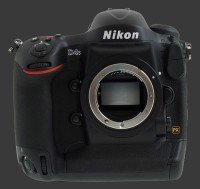
Nikon D4S which is more suitable for action photography.
Nikon really produced a compelling upgrade to the D800E and D800. Their latest DSLRs manages to match or improve upon nearly all areas. With the same layout, the Nikon D810 offers great ergonomics with a simple and intuitive interface, plenty of manual controls, fast autofocus and a 100% coverage viewfinder in a sturdy weather-sealed body with dual control-dials.
When considering this DSLR, the only caution is that it demands the best lenses to show its true performance. Its 36 megapixels allow for huge prints and rivals the capability of much more costly medium-format cameras.
 |
Please Support Neocamera
All information on Neocamera is provided free of charge yet running this website is a huge endeavor. Purchases made via affiliate links found throughout the site help keep it running and up-to-date. There is no additional cost to you, so please consider buying via these links to our affilates:
Thank you for your support!
Nikon D810 Highlights
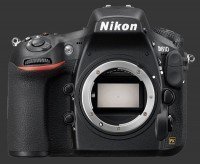
Sensor-Size: 36 x 24mm

Actual size when viewed at 100 DPI
| 36 Megapixels DSLR | ISO 32-51200 |
| Nikon F Mount 1X FLM | Shutter 1/8000-30s |
| 100% Coverage Extra Large Viewfinder | Full manual controls, including Manual Focus |
| 2 Axis Digital Level | Custom white-balance with 2 axis fine-tuning |
| Weatherproof | Spot-Metering |
| Built-in Dust Reduction | Hot-Shoe & Sync-Port |
| 5 FPS Drive, 100 Images | Stereo audio input |
| 1920x1080 @ 60 FPS Video Recording | Lithium-Ion Battery |
| 3.2" LCD 1.2 Megapixels | Secure Digital Extended Capacity, Compact Flash Type 1 |
Updates
2025.11.13

Best Gifts for Photographers in 2025 by Budget
The annual Neocamera Photography Gift Guide updated to 2025. Find great gifts for photographers with any price budget.
2025.07.07

Stellar Photo Recovery Review
Review of Stellar Photo Recovery V12. This Windows and MacOS software can recover photos and videos in a huge number of formats from memory cards, USB drives, SSDs and HHDs.
2025.05.14

Huion Kamvas 13 Gen 3 Review
In-Depth review of the Huion Kamvas 13 Gen 3 Pen Display Tablet for photographers and graphic artists.
2025.01.18

Fujifilm GFX 2025 Lens Roundup
Lens Review roundup of Fujifilm GFX Medium-Format lenses. Quality, performance and handling of the GF20-35mm F/4R WR, GF30mm F/3.5 Tilt-Shift and the GF55mm F/1.7.
2024.11.18

Best 2024 Photography Gifts for Every Budget
Great gifts for photographers and photo enthusiasts selected for every budget among the best products of 2024.
2024.08.07

Eye Protection Tips for Professional Photographers
The four main considerations for professional photographers regarding eyewear.
2024.07.14

Fujifilm X100VI Review
Flagship fixed-lens compact digital camera with a 40 MP sensor and Image-Stabilization, a first for the series. Retro design featuring dual control-dials, plus direct ISO, Shutter-Speed and EC dials. Its hybrid viewfinder can switch between EVF and OVF mode.
2024.05.09

Fujifilm GFX100 II Review
Flagship 102 Megapixels Medium-Format Mirrorless Digital Camera with 8-Stop 5-Axis IBIS, 8 FPS Drive, 8K Video and 400 MP Super-Resolution capture in a weatherproof and freezeproof body with dual control-dials and dual memory-card slots.
2024.04.03

Fujifilm X-T5 Review
Newest Fujifilm flagship boasting a 40 MP APS-C sensor, 5-axis IBIS with 7-stop efficiency, 15 FPS continuous drive, 6.2K Video capture, dual control-dials and dual SDXC UHS-II slots in a sturdy weatherproof and freezeproof body.
2023.11.20

Best Digital Cameras of 2023
Find out which are the Best Digital Cameras of 2023. All the new Mirrorless Digital Cameras from entry-level to high-end professional.
2023.07.10

Fujifilm X-H2 Review
40 Megapixels APS-C Hybrid Mirrorless Digital Camera with 7-stop IBIS. Fastest shutter ever and 8K video capture. Large builtin EVF with 0.8X magnification and 5.8 MP, plus an Eye-Start Sensor. Packed with features and large number of controls in a weatherproof and freezeproof body.
2023.05.07

Sony FE 20-70mm F/4G Review
Review of the unique Sony FE 20-70mm F/4G lens. The optical zoom of this lens spans ultra-wide-angle and medium focal-length coverage, making it one of the most versatile Full-Frame lenses on the market.











